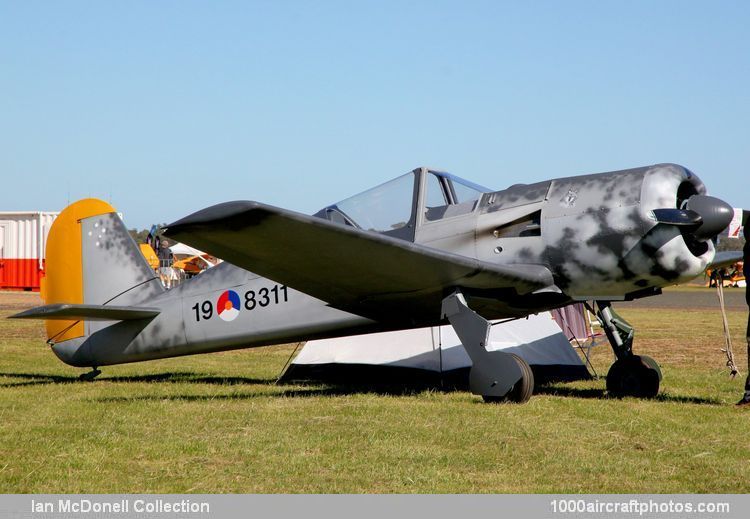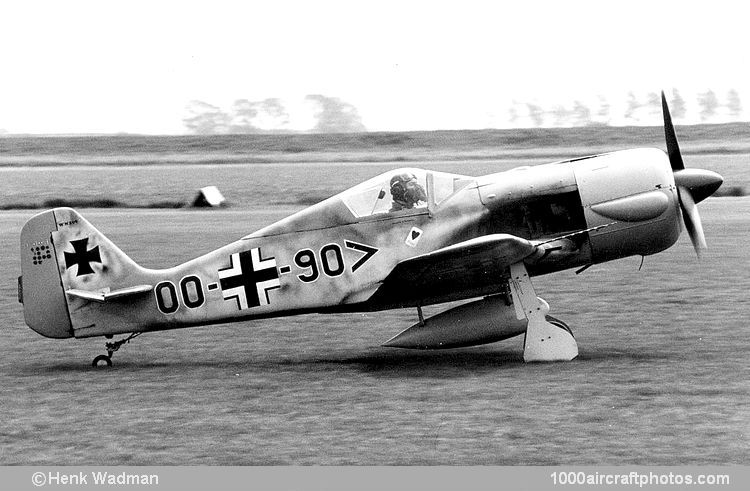06/30/2024. Remarks by Johan Visschedijk: "War Aircraft Replicas (W.A.R.) was founded at Santa Paula, California, USA in 1973, to market plans and kits for amateur construction of ½ scale replicas of a series of WW II aircraft. The term "½ scale" is not strictly accurate, but refers to the general overall dimensions of the aircraft. For example, to provide adequate accommodation for the pilot, the cockpit is considerably larger than ½ scale, and the area of the horizontal and vertical tail surfaces has been increased beyond scale to ensure adequate stability.
The basic concept involves the use of a common design wooden fuselage box and spar structure, the desired contours to duplicate a particular aircraft are obtained by using carved polyurethane foam, covered with high-strength laminating fabric and epoxy resin to form a lightweight and rigid structure that is stressed to ± 6g, allowing for aerobatic maneuvers. By changing fuselage contours, using different engine cowlings and wingtips, and by shape changes to tail unit surfaces, it was considered that a number of different aircraft could be copied with reasonable similarity to the full-scale combat types. W.A.R.'s aircraft were originally designed for Volkswagen engines, but later also other engines were used.
The first in this series of replicas was the Focke-Wulf FW 190 and design started in July 1973, work on the prototype started in February 1974 and the aircraft was first flown six months later, August 21, powered by a 70 hp 1,600 cc modified Volkswagen car engine. It was later re-engined with an 100 hp Continental O-200-A, which was also the recommended engine. Several aircraft were built, including examples in Australia, Belgium, France, Switzerland, UK and USA.
Since 1973 plans and parts for over twenty types have been produced, plans and parts for twelve are still available from War Aircraft Replicas, presently based at Owasso, Oklahoma.
The aircraft pictured above was built in Australia in 2014 by Reinart Vandermolen. It is fitted with a Lycoming O-320 four-cylinder horizontally-opposed air-cooled engine. The family naam is also known in the Netherlands, this, and the roundel on the fuselage suggests that the builder has roots in the Netherlands.

